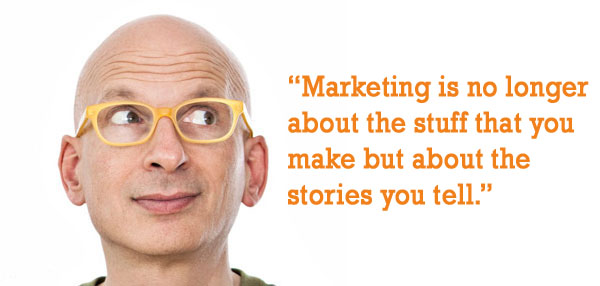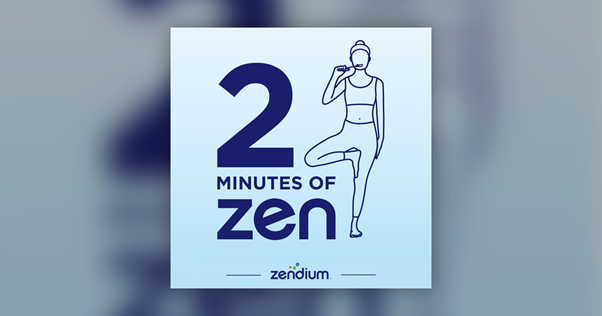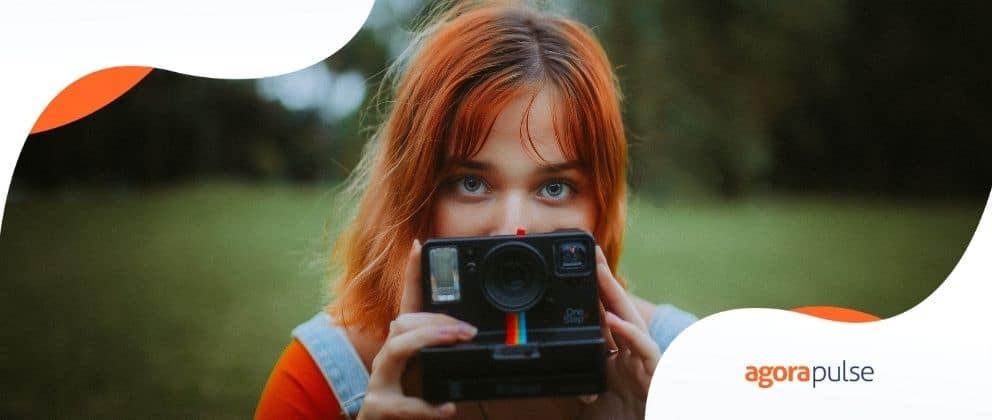
The Diversification of Content Marketing in 2021
Today, consumers want their brands to tell them a story, to help them, to build community and to be accountable. They want to know who they’re dealing with and to feel a connection with the brand through social media and content. To create the best experience for your audience you need to utilise diverse content marketing techniques. Let’s talk about the diversification of content marketing in 2021.
Content Marketing in 2021 – A World of High Expectations
With so much of the world bombarded with ads, banners, social media posts, web updates, video content, and more every day, the mundane no longer impresses. Your brand’s content marketing needs to get clever if you want to get noticed. But how?
Telling a Story
If you’ve been in the marketing business for any length of time, there’s a good chance you’ve encountered the following quote by author and entrepreneur Seth Goddin.

Those words were true when he first spoke them, but in 2021, they have never been truer. Getting people emotionally invested in your campaigns and telling the ‘story’ of your brand is proven to be a good approach in a world where consumers are inundated with marketing.
Esteemed cognitive psychologist Jerome Bruner found that a fact incorporated into a story is remembered approximately 22 times better than a fact given alone. How is this relevant to content marketing? Well, the same logic applies. Give an audience a fact or statistic about your product or service and there’s a good chance it will be quickly forgotten. Wrap that fact or stat into a compelling story and your audience is 22 times more likely to remember it. This means you should be telling the ‘story’ of your brand in all forms of content, not just on your ‘About’ page.

We know that storytelling is effective. But how do we do it – what strategies make for compelling storytelling? Storytelling can take the form of an array of content:
- Social media posts. Construct a narrative using your socials. CEO of Zumaeta Group, Ginger Zumaeta, advises brands to show their human side and the hard work that goes into delivering quality products and services to your customers; she says, ‘social media posts that show the behind-the-scenes workings of your company – even if they’re messy or ugly’ show an ‘authentic’ side to your brand.”
- Video. Establish a narrative in your video content, with your brand at the centre. Be wary though – when paying for the production of video content, far too many brands are tempted to make themselves the ‘hero’ of the story. Entrepreneur and CEO of OneIMS, Solomon Thimothy, warns against this; he says that instead, the focus should be that, ‘You [the customer] have XYZ problems, and here’s how you can solve them using our product.’
- Customer-led stories. What better way to tell your customers the story of your brand, than through your existing customers. Including quotes and testimonials from real customers to allow your audience to envision how they can reap the rewards of purchasing your brand too.
- Reviews- At a time when consumers crave transparency, with 47% tired of inauthenticity from influencers, reviews are a great way to tell a story through someone else’s eyes and not be overly self-promotional.
Video content
You will be hard-pressed to find a substantially successful brand that isn’t incorporating video content into their marketing strategy in some form.

The past decade or more has seen exponential growth of the amount of video that is consumed online. This natural increase of global hours watched has been accelerated by the COVID-19 pandemic as lockdowns meant that people were spending more time than ever at home; what better way to pass the time when confined to the house than watching a video or two?
As of December 2020, people watch an average of 18 hours of online video per week. That’s more than two and a half hours every day. Only 12 months prior to this, the average was 16 hours. Perhaps more startlingly, in 2017 it was just 10 and a half hours. This rapid increase in video consumption is set to continue and 2021 is set to see this biggest expenditure on video yet, with 99% of marketers planning to continue using video in their campaigns. Along with marketers, freelance content creators have also taken up the video trend with platforms where they can upload videos to make them go viral. Sell on newsflare, or other such sites, after that maybe. There can be so many ways to go. Still, the question arises, with so much buzz surrounding video content – is video effective for marketing?

Absolutely. Marketers overwhelmingly agree that video is the most effective form of content marketing. Learn more about how to make the best video content for your brand.
Live streaming on social media
Did you know that the live streaming industry grew by 99% between 2019 and 2020? At least in part, this huge growth can be attributed to enforced lockdowns. Video should no longer be confined to pre-recorded content. 2021 is set to see more diversification of video content, including more brands using live streaming to promote their products and services. The biggest live streaming platforms are Facebook, Instagram, and Twitter in terms of users. Gaming platform Twitch with the most hours watched (a staggering 17 billion in 2020).
So, what kind of content is best delivered as a live stream? Each brand is different, and your content should depict that fact, but a few varieties to consider include:
- Behind-the-scenes looks. Take viewers on a journey through the factory, let them see the process of your product being made, give them backstage access to your offices.
- Interviews. Create a buzz around your brand by interviewing a big or big-ish name.
- Q&A. Let your customers ask their burning questions live.
- Webinars. Share your industry knowledge to show that your brand is corporately responsible and to attract a wider following.
- Influencer takeovers. Enlist the help of an influencer to ‘take over’ your social media. Giving them temporary login details means they can do this from their home and with their own equipment (saving you time, expense, and resources).
Audio/podcasts
Effective marketing tells a story – something that can be done through podcasts. Additionally, a study by the BBC showed that people are generally more receptive to brand messages when they are multitasking i.e. listening to a branded podcast whilst driving, cleaning, cooking etc. Something that 94% of podcast listeners are doing. The study also found that the intimate nature of podcasts helps to drive brand metrics including: awareness (↑89%), brand consideration (↑57%), brand favourability (↑24%), and purchase intent (↑14%). Furthermore, podcasts provide a unique cut-through to ad avoiders, with the study indicating that they are 22% more likely to be receptive to branded podcasts over television advertising.
Podcasts can be a slow burn in terms of listenership, but podcast listeners are loyal, with most people listening to a podcast series at least more than once and 80% of people listening to most or all of the episode. Plus, many podcast listeners are relatively affluent, meaning they are more likely to have disposable income to spend on your brand than audiences on your social media accounts.
There are now numerous active branded podcasts from brands including eBay, Marks & Spencer, McDonald’s, NatWest, Urban Outfitters, Starbucks, Kettle Chips, Just EAT! — you name it, there’s probably a podcast.
Toothpaste brand Zendium created the ‘2 Minutes of Zen’ podcast in 2019. Today, it is in the global top 10% of all podcasts.

Each episode is around four minutes in total. Some episodes are targeted towards children and others adults. They give facts about oral hygiene, instruct on quick meditation and exercise techniques, as well as telling listeners when their two minutes of brushing time is up. The podcasts never push the brand with a hard sell. The brand may be mentioned once at the beginning or end, but the focus is on giving listeners that ‘two minutes of zen’. It’s through this approach that Zendium conveys authenticity. That there are humans behind the brand. If you want to sell your services through a podcast but don’t know where to start, podcasting services like Lower Street could help you create the podcast of your dreams.
Use Feed Stopping Visuals
Did you know the human brain can process images up to 60,000 times quicker than words? Think carefully about your images and understand the psychology behind the colours, fonts and styles that you use. Think carefully about your approach to visual content though. As Bernard May, CEO of National Positions, says,
‘Putting a product image next to a product description can be vanilla and boring. Where are the sprinkles?’
We know that colors trigger psychological responses. 80% of consumers think colour increases brand recognition. McDonald’s is a brand that has associated itself with happiness from day 1. The cheery yellow M logo. The happy meal and kids’ toys, and the onsite playgrounds at each restaurant are there for that exact purpose. Look at its Instagram post below … You can see a childlike image with bright cheery yellow and an invitation to tag a friend and take the friendship test.

- Think about background colours when you take photographs for social media
- Choose your CTA button colours. Black, white, and brown are the worst colours; orange, red, and green work best. Even if your CTA on social media is not clickable, it’s still a good idea to highlight the key CTA messages in the right colour.
- Photography can also be used to stop social media scrollers in their tracks. By putting your product in the middle with plenty of space around it, you are drawing the eye.
- Social media users crave human connection and will stop to look at eyes in their feed.
User generated Content – UGC
UGC has become the mainstay of social media marketing and is used by leading brands around the world. 85% of people trust content made by other users. So why does it work?
- It shows transparency when you showcase happy (or even unhappy but resolved) client feedback.
- UGC helps to build community which is something everyone should be doing in 2021
- Give your users the feeling that they’re being listened to and heard. everyone loves to be acknowledged by a brand on social media
- It’s free and doesn’t require any planning or design on your part.
UGC featuring audience posts or Stories, adds trust and authenticity to your account and expands your reach too. IKEA encourages users to tag their IG account and frequently features posts like this one adding warmth and relatability to their account.

Great Content At The Centre
Videos, podcasts, dynamic emails, and images are incredibly powerful but don’t neglect your blog and caption content. Quality copy accompanying posts give fans description, FOMO and direction on what to do next. I recently authored an article at leading tech site Agorapulse on the importance of great social media captions. Check it out here.
Which content marketing strategy is your brand likely to adopt in 2021? Comment or tweet @Charli_Says and let me know. Want 2021 savvy content for your brand? Get in contact. Enjoyed reading The Diversification of Content Marketing in 2021? Go ahead and hit share.


